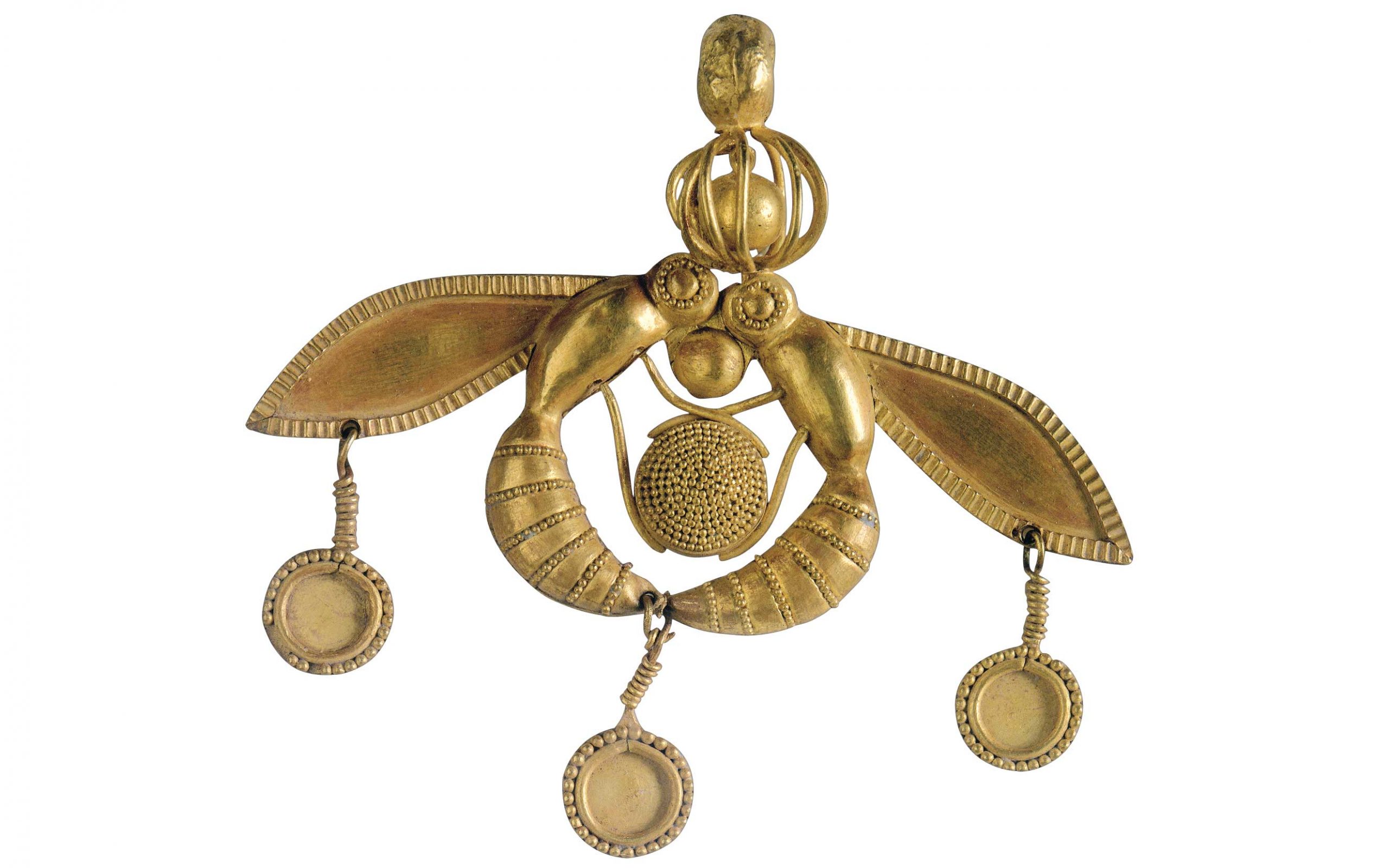Traditional Cretan Food: From Farm to Table at...
Experience Crete’s slow food philosophy where...

The golden bee pendant is a masterpiece of Minoan ingenuity and design.
© N/A
The famous gold bee pendant from the Minoan palace at Malia, on the north coast of Crete, represents two bees depositing a drop of honey in a honeycomb. It is a masterpiece of Minoan jewelry and one of the finest and most intricate examples of Aegean Bronze Age metalwork.
Discovered in a grave in the cemetery of the First or “Protopalatial” Period at Malia and dated to 1700 BC, the bee pendant is centered around a circular honeycomb, shown schematically as a granulated disc. The two insects meet head-to-head, their bodies and wings finely detailed, as their legs clasp the honeycomb. Circular gold discs are suspended from their wings and at the point where their abdomens touch, while an openwork filigree cage enclosing a solid sphere sits atop their heads.
Technically and stylistically influenced by the Egyptians and Babylonians, Minoan jewellers used smelting technology to refine gold and other precious metals to produce a staggering array of objects and designs. Finely crafted pieces like the bee pendant would have been beaten, engraved and embossed by hand.
Gold was likely imported from Egypt or Asia Minor, a rare and precious commodity that would have been restricted to high status individuals in Minoan society.
Minoan jewelry took many forms, including diadems, necklaces, bracelets, earrings and pendants. Rings were also produced, in large quantities, using moulds. Engraved with detailed miniature scenes, often landscapes and religious ceremonies, rings were also employed as seals.
Experience Crete’s slow food philosophy where...